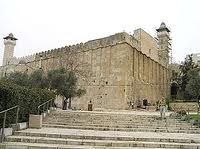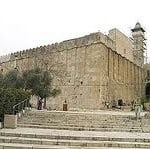“Sarah died in Kiryat Arba, also known as Hebron, in the land of Canaan. Abraham came to eulogize Sarah and to weep for her.” (Gen. 23:2)
On February 18, 1930, a somber gathering assembled in the Yeshurun synagogue in Jerusalem. The synagogue and its plaza were packed as crowds attended the memorial service for the Jews of Hebron killed in the Arab rioting half a year earlier.
Hebron, the 18th of Av 5689 (August 24, 1929)
On that tragic Sabbath day, news about the massacre in Hebron reached the Jewish leaders in Jerusalem. Yitzchak Ben-Zvi, then director of the National Committee, hurried to Rav Kook’s house. Together they went to speak with Harry Luke, the acting British high commissioner, so that he would take action and protect the Jews of Hebron.
The chief rabbi demanded that the British take severe and immediate measures against the Arab rioters. To Luke’s question, ‘What can be done?’ Rav Kook’s response was short and decisive: ‘Shoot the murderers!’
‘But I have received no orders about this.’
‘Then I am commanding you!’ Rav Kook roared. ‘In the name of humanity’s moral conscience, I demand this!’
Not long after this heated exchange, an official reception was held in Jerusalem and Mr. Luke held out his hand to greet the chief rabbi. But Rav Kook, who held the commissioner responsible for British inaction during the massacre, refused to take his hand.
“I do not shake hands that are defiled with Jewish blood.”
Mourning the Loss
The day after the rioting in Hebron, the extent of the massacre was revealed. Arab mobs had slaughtered 67 Jews — yeshiva students, elderly rabbis, women, and children. The British police had done nothing to protect them. The Jewish community of Hebron was destroyed, and their property had been looted and stolen. The British sent the survivors to Jerusalem.
The tzaddik Rabbi Arieh Levine accompanied Rav Kook that Sunday to the Hadassah hospital, in order to hear news of the Hebron community by telephone. Rabbi Levine recalled the terrible memories that would be forever etched in his heart:
“When the Rav heard about the murder of the holy martyrs, he fell backwards and fainted. After coming to, he cried bitterly and tore his clothes ‘over the house of Israel and God’s people who had fallen by the sword.’ He sat in the dust and recited the blessing “Baruch Dayan Ha’emet.”
“For some time after that, his bread was the bread of tears and he slept without a pillow. Old age suddenly fell upon him, and he began to suffer terrible pains. This tragedy brought about the illness from which the Rav never recovered.”
The Memorial Service in Jerusalem
Six months later, grieving crowds filled the Yeshurun synagogue. A mourning mood of Tisha B’Av lingered on the gathering, as they assembled in pained silence. Survivors of the massacre, who had witnessed the atrocities before their eyes, recited kaddish for family members murdered in the rioting.
Rabbi Yakov Yosef Slonim, who had lost his son — a member of the Hebron municipal council — and grandchildren in the massacre, opened the assembly in the name of the remnant of the Hebron community. No healing has taken place during the past six months, he reported. The murder and the theft have not been rectified. The British government and the Jewish leadership have done nothing to correct the situation by reclaiming Jewish property and resettling Hebron.
Rabbi Kook’s Speech
Afterwards, the chief rabbi rose to speak.
The holy martyrs of Hebron do not need a memorial service. The Jewish people can never forget the holy and pure souls who were slaughtered by murderers and vile thugs.
Rather, we must remember and remind the Jewish people not to forget the city of the Patriarchs. The people must know what Hebron means to us.
We have a tradition that “The actions of the fathers are signposts for the children” (Nachmanides, Gen. 12:6). When the weak-hearted spies arrived at Hebron, they were frightened by the fierce nations that lived in the land. But ‘Caleb quieted the people for Moses. He said, ‘We must go forth and occupy the land — we can do it!” (Num. 13:30)
Despite this terrible tragedy that took place in Hebron, we announce to the world, “Our strength now is like our strength then.” We will not abandon our holy places and aspirations. Hebron is the city of our fathers, the city of the Machpeilah cave where our Patriarchs are buried. It is the city of David, the cradle of our sovereign monarchy.
Those who discourage the ones trying to rebuild the Jewish community in Hebron with arguments of political expedience; those who scorn and say, ‘What are those wretched Jews doing?’; those who refuse to help build Hebron — they are attacking the very roots of our people. In the future they will need to give account for their actions. If ruffians and hooligans have repaid our kindness with malice, we have only one eternal response: Jewish Hebron will once again be built, in honor and glory!
The inner meaning of Hebron is to draw strength and galvanize ourselves with the power of Netzach Yisrael, Eternal Israel.
That proud Jew, Caleb, announced years later, “I am still strong… as my strength was then, so is my strength now” (Joshua 14:11). So too, we announce to all: our strength now is as our strength was then. We shall reestablish Hebron in even greater glory, with peace and security for every Jew. With God’s help, we will merit to see Hebron completely rebuilt, speedily in our days.
Addendum
While some Jewish families did return to Hebron in 1931, they were evacuated by the British authorities at the start of the Arab revolt of 1936. For 34 years, there was no Jewish community in Hebron — until 1970, when the government of the State of Israel once again permitted Jewish settlement in Hebron. This return to Hebron after the Six-Day War was spearheaded by former students of the Mercaz HaRav yeshiva, disciples of Rav Kook’s son, Rabbi Zvi Yehuda Kook.
In 1992, Rav Kook’s grandson, Rabbi Shlomo Ra’anan, moved to Hebron. Six years later, an Arab terrorist stabbed the 63-year-old rabbi to death. But soon after, his daughter — Rav Kook’s great-granddaughter — together with her husband and children, moved to Hebron, thus continuing the special link between the Kook family and the city of the Patriarchs.
(Adapted from Malachim Kivnei Adam, pp. 155-157; 160; 164-165)

